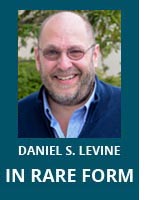 When Robert Shafran arrives as a freshman at Sullivan County Community College in New York’s Catskill Mountains, one person after another greets him with puzzling familiarity that goes beyond mere friendliness. He’s asked about his summer, one girl runs up to give him a kiss, and everyone calls him “Eddy.”
When Robert Shafran arrives as a freshman at Sullivan County Community College in New York’s Catskill Mountains, one person after another greets him with puzzling familiarity that goes beyond mere friendliness. He’s asked about his summer, one girl runs up to give him a kiss, and everyone calls him “Eddy.”
Anther student, who knows that his friend Eddy Galland is not returning to school, is stunned by the likeness Shafran bares to his friend. He asks Shafran if he was adopted. When Shafran replies that he was, the student asks him what his birth date is. It is then the other student tells him that he believes he has a twin brother.
The two head off to Long Island where Shafran’s doppelganger Galland lives and soon the remarkable story about twins appears in the Long Island newspaper Newsday. When the story runs, the tale takes another twist. When David Kellman reads the story and recognizes his own likeness in the photograph of the twins and realizes he shares the same birthdate and story of adoption, he contacts them. They soon discover they were triplets.
The documentary Three Identical Strangers begins as a happy tale about how the triplets, separated at birth and adopted by three different families, are reunited through a bizarre coincidence. The brothers become celebrities, appear on television shows, and are featured in national magazine and newspaper stories. Much is made of how much the boys have in common. They like the same music, they have the same taste in women, and they smoke the same cigarettes. They move in together and become fixtures of New York’s nightlife. Eventually they open a restaurant together.
The gripping documentary by filmmaker Tim Wardel, though, soon turns dark.
The adoption agency is evasive when confronted by the adoptive families. The families want to know why they were never told their adopted sons were part of a set of triplets. But it is when the New Yorker magazine writer Lawrence Wright is researching a story about twins that he reads about siblings who were intentionally separated for a secret research study. Eventually he is able to piece together that the brothers had been separated at birth intentionally as part of this study.
Though the adoptive parents allowed researchers to come to their home regularly to test the boys, they never knew the real reason the boys were being studied. The adoption agency simply told them the children were part of an ongoing childhood development study and nothing more.
The study, led by the prominent psychiatrist Peter Neubauer, is shrouded in mystery. The boys appeared to have been intentionally placed with three sets of parents of different socioeconomic status with different parenting styles. As detail in the story of the lives of the triplets is told, the tale grows painful and tragic.
This is not the first case of unethical researchers doing harm to subjects. The film leaves many questions unanswered because the answers are not known. The research was never published, and all of the data sits in a collection at Yale University with the understanding that it is to remain sealed until 2066. The film suggests that the study was intended to address the nature or nurture controversy and determine whether we are products of our genes or products of our environment.
It was only through concerns about the film’s release that the organization that controls the research data reversed itself and allowed the two surviving triplets access to redacted versions of the data about themselves. It’s not clear why the data remains sealed or why information provided to the surviving triplets was redacted, although there are suggestions that more than one set of twins who were subjects of the study may not know they were participants in the research or that they have a twin sibling.
Three Identical Strangers is not a documentary about rare diseases. Nevertheless, I found myself viewing it through the lens of rare disease advocates who have fought for a greater voice in research studies, greater transparency in the researcher process, and access to their own data.
It’s easy to believe that researchers have the best intentions in the work they do. It’s easy to rely on institutional review boards to see there is adequate oversight and that the rights of patients are protected. It’s easy to engage with researchers when there is no treatment for a disease and someone shows an interest in doing something about it.
Three Identical Strangers is a reminder for rare disease patients to never stop asking questions. As research participants they are not passive subjects, but partners in a process who should fight for their rights including rights to their research data.

Stay Connected
Sign up for updates straight to your inbox.
